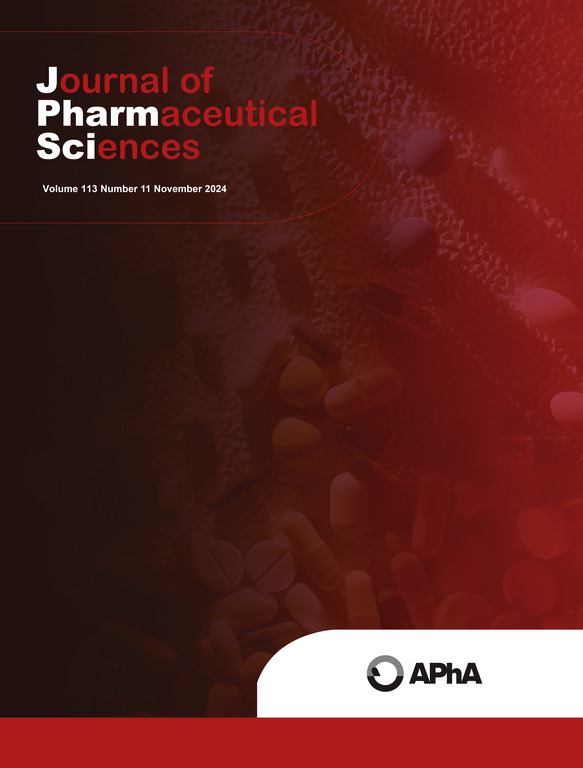Microfluidic blood-milk barrier and physiologically based pharmacokinetic model to predict lofexidine secretion into breast milk
IF 3.7
3区 医学
Q2 CHEMISTRY, MEDICINAL
引用次数: 0
Abstract
Introduction
Lofexidine (LUCEMYRA®) is the only FDA-approved, non-opioid, non-addictive treatment for opioid withdrawal symptoms, crucial for postpartum and pregnant women affected by the opioid crisis. Despite its clinical importance, data on its secretion into breast milk is limited. This study aims to develop a novel, microfluidic-based blood-milk-barrier on a chip model, a static human mammary cell transwell model, and a physiologically based pharmacokinetic (PBPK) lactation model to estimate the breast milk secretion of lofexidine, thereby ensuring maternal and infant safety and improving withdrawal management.
Methods
A novel microfluidic device was developed to build a mammary epithelium-on-a-chip model, and a transwell plate was used to develop a static mammary epithelium using a human noncarcinogenic mammary epithelial cell (MEC) population that can form an integrated barrier with tight junctions. Both models were used to evaluate the transfer of lofexidine through the in vitro mammary cell barrier. The fraction of unbound lofexidine in the breast milk was determined by a Rapid Equilibrium Dialysis (RED) assay. Eleven approaches, including a novel, previously published in vitro to in vivo extrapolation (IVIVE) approach and various other approaches, were used to estimate milk-to-plasma (M/P) ratios of lofexidine. A whole-body lactation PBPK model was built using Simcyp® simulator v22 and used to predict the concentration-time profiles of lofexidine in both human plasma and breast milk.
Results
A subpopulation of human normal mammary epithelial MCF10A cells (named MCF10A-TJ) was identified to form an integrated barrier that reaches trans-epithelial electrical resistance (TEER) values of over 1000 Ω·cm2 by culturing with in-house designed maintenance and boosting medium. The microfluidic device-based mammary epithelium-on-a-chip model generated slightly higher lofexidine permeability values than the static transwell mammary epithelial cell model. The predicted milk-to-plasma (M/P) ratio of lofexidine ranged from 0.40 to 15.88. Four approaches estimated an M/P ratio below 1, while seven predicted values above 1, mostly between 1.35 and 5.48. The whole-body lactation PBPK model predicted the concentration-time profile of lofexidine in breast milk, with an estimated M/P ratio of approximately 2.0. This value falls within the mid-range of the predictions obtained from all eleven methods.
Conclusion
This study introduces comprehensive and novel approaches to predict lofexidine secretion into breast milk. Most predictions suggest higher lofexidine concentration in milk than in plasma, raising potential safety concerns for opioid withdrawal management. Further pharmacokinetic clinical lactation studies are needed to validate these predictions.

微流控血乳屏障和基于生理的药代动力学模型预测洛非昔定分泌到母乳中。
Lofexidine (LUCEMYRA®)是fda批准的唯一一种治疗阿片类戒断症状的非阿片类、非成瘾性药物,对受阿片类药物危机影响的产后和孕妇至关重要。尽管其临床重要性,但其分泌到母乳中的数据有限。本研究旨在建立一种新型的基于微流体的芯片血乳屏障模型、静态人乳腺细胞transwell模型和基于生理的药代动力学(PBPK)泌乳模型,以评估洛非昔定的母乳分泌,从而确保母婴安全,改善停药管理。方法:采用一种新型微流体装置构建乳腺上皮芯片模型,利用人类非致癌乳腺上皮细胞(MEC)群体构建静态乳腺上皮,MEC群体可以形成紧密连接的整体屏障。两种模型均用于评价洛非昔定通过体外乳腺细胞屏障的转移。采用快速平衡透析(RED)法测定母乳中游离洛非昔定的含量。11种方法,包括一种新颖的,先前发表的体外到体内外推法(IVIVE)方法和各种其他方法,被用于估计洛非昔定的乳-血浆(M/P)比率。使用Simcyp®模拟器v22建立全乳PBPK模型,用于预测洛非昔定在人血浆和母乳中的浓度-时间分布。结果:鉴定出正常乳腺上皮细胞MCF10A亚群(命名为MCF10A- tj),通过内部设计的维持和促进培养基培养,形成一个完整的屏障,其跨上皮电阻(TEER)值超过1000 Ω·cm2。基于微流控装置的乳腺上皮芯片模型产生的洛非昔定通透性值略高于静态transwell乳腺上皮细胞模型。预测洛非昔定的乳浆比(M/P)范围为0.40 ~ 15.88。有4种方法预测的市净率低于1,7种方法预测的市净率高于1,大多在1.35 ~ 5.48之间。全身泌乳PBPK模型预测了洛非昔定在母乳中的浓度-时间分布,估计M/P比约为2.0。该值落在所有11种方法预测结果的中间范围内。结论:本研究为预测洛非昔定在母乳中的分泌量提供了一种全面而新颖的方法。大多数预测表明,牛奶中的洛非昔定浓度高于血浆中的洛非昔定浓度,这增加了对阿片类药物戒断管理的潜在安全担忧。需要进一步的临床泌乳药代动力学研究来验证这些预测。
本文章由计算机程序翻译,如有差异,请以英文原文为准。
求助全文
约1分钟内获得全文
求助全文
来源期刊
CiteScore
7.30
自引率
13.20%
发文量
367
审稿时长
33 days
期刊介绍:
The Journal of Pharmaceutical Sciences will publish original research papers, original research notes, invited topical reviews (including Minireviews), and editorial commentary and news. The area of focus shall be concepts in basic pharmaceutical science and such topics as chemical processing of pharmaceuticals, including crystallization, lyophilization, chemical stability of drugs, pharmacokinetics, biopharmaceutics, pharmacodynamics, pro-drug developments, metabolic disposition of bioactive agents, dosage form design, protein-peptide chemistry and biotechnology specifically as these relate to pharmaceutical technology, and targeted drug delivery.

 求助内容:
求助内容: 应助结果提醒方式:
应助结果提醒方式:


